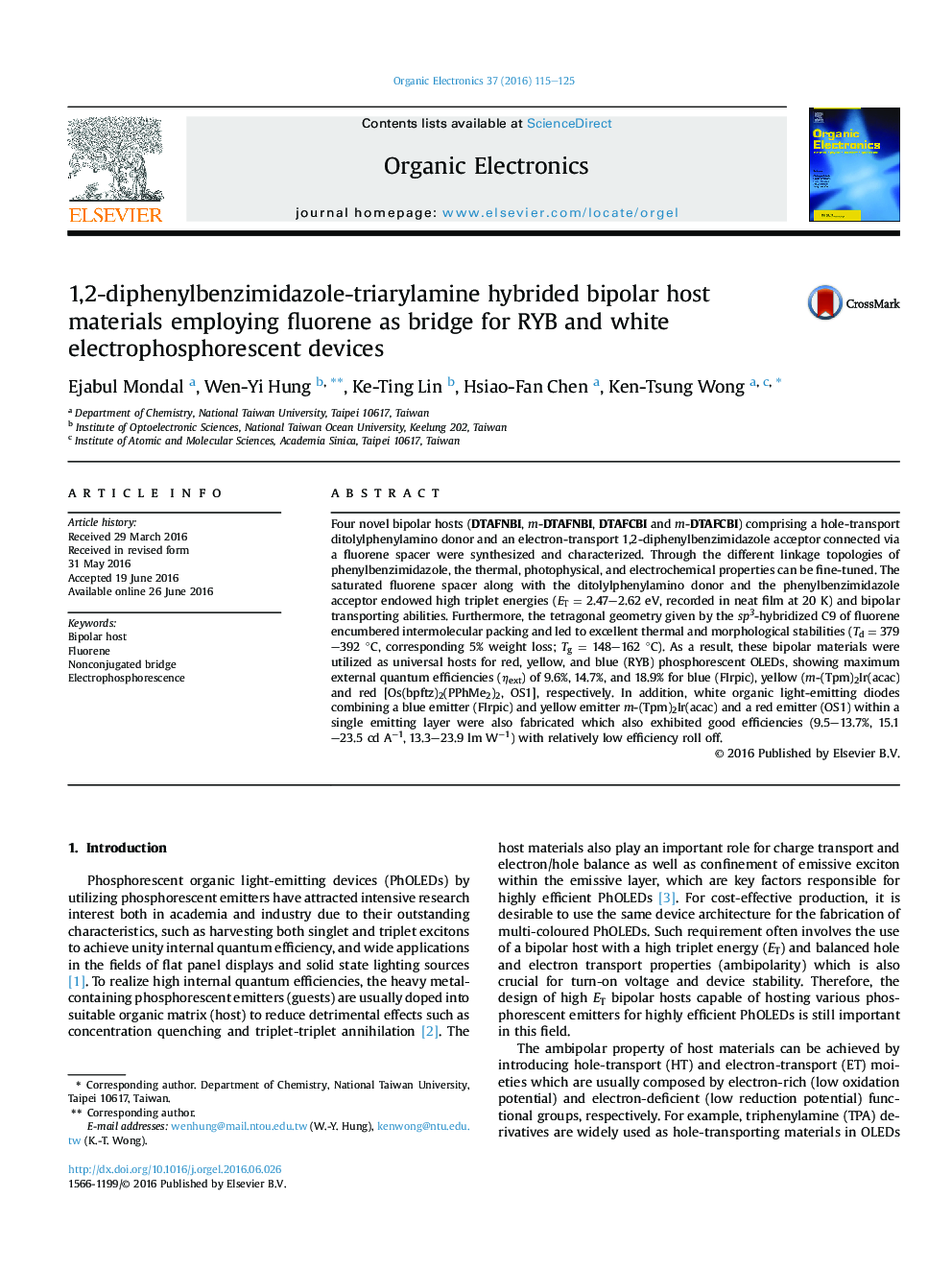| کد مقاله | کد نشریه | سال انتشار | مقاله انگلیسی | نسخه تمام متن |
|---|---|---|---|---|
| 1264664 | 1496820 | 2016 | 11 صفحه PDF | دانلود رایگان |

• Four bipolar hosts with fluorene-linked triarylamine donor and 1,2-phenylbenzimidazole acceptor were synthesized.
• The different linkage topologies of phenylbenzimidazole attaching to C3 of fluorene have evident effects on properties.
• DTAFNBI & m-DTAFNBI with 1-phenylene bridging to fluorene gave better blue device efficiency.
• The red PhOLED device hosted by DTAFNBI shows maximum EQE of 18.9%.
Four novel bipolar hosts (DTAFNBI, m-DTAFNBI, DTAFCBI and m-DTAFCBI) comprising a hole-transport ditolylphenylamino donor and an electron-transport 1,2-diphenylbenzimidazole acceptor connected via a fluorene spacer were synthesized and characterized. Through the different linkage topologies of phenylbenzimidazole, the thermal, photophysical, and electrochemical properties can be fine-tuned. The saturated fluorene spacer along with the ditolylphenylamino donor and the phenylbenzimidazole acceptor endowed high triplet energies (ET = 2.47–2.62 eV, recorded in neat film at 20 K) and bipolar transporting abilities. Furthermore, the tetragonal geometry given by the sp3-hybridized C9 of fluorene encumbered intermolecular packing and led to excellent thermal and morphological stabilities (Td = 379–392 °C, corresponding 5% weight loss; Tg = 148–162 °C). As a result, these bipolar materials were utilized as universal hosts for red, yellow, and blue (RYB) phosphorescent OLEDs, showing maximum external quantum efficiencies (ηext) of 9.6%, 14.7%, and 18.9% for blue (FIrpic), yellow (m-(Tpm)2Ir(acac) and red [Os(bpftz)2(PPhMe2)2, OS1], respectively. In addition, white organic light-emitting diodes combining a blue emitter (FIrpic) and yellow emitter m-(Tpm)2Ir(acac) and a red emitter (OS1) within a single emitting layer were also fabricated which also exhibited good efficiencies (9.5–13.7%, 15.1–23.5 cd A−1, 13.3–23.9 lm W−1) with relatively low efficiency roll off.
Figure optionsDownload as PowerPoint slide
Journal: Organic Electronics - Volume 37, October 2016, Pages 115–125